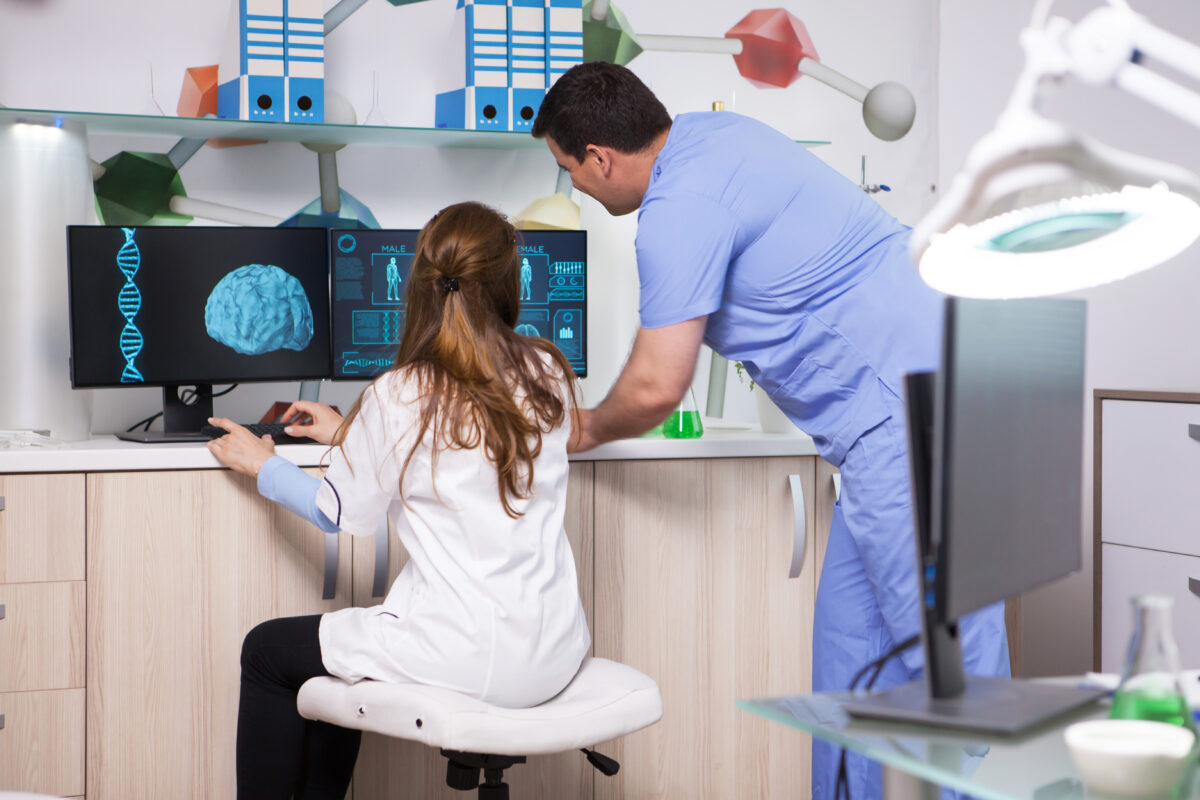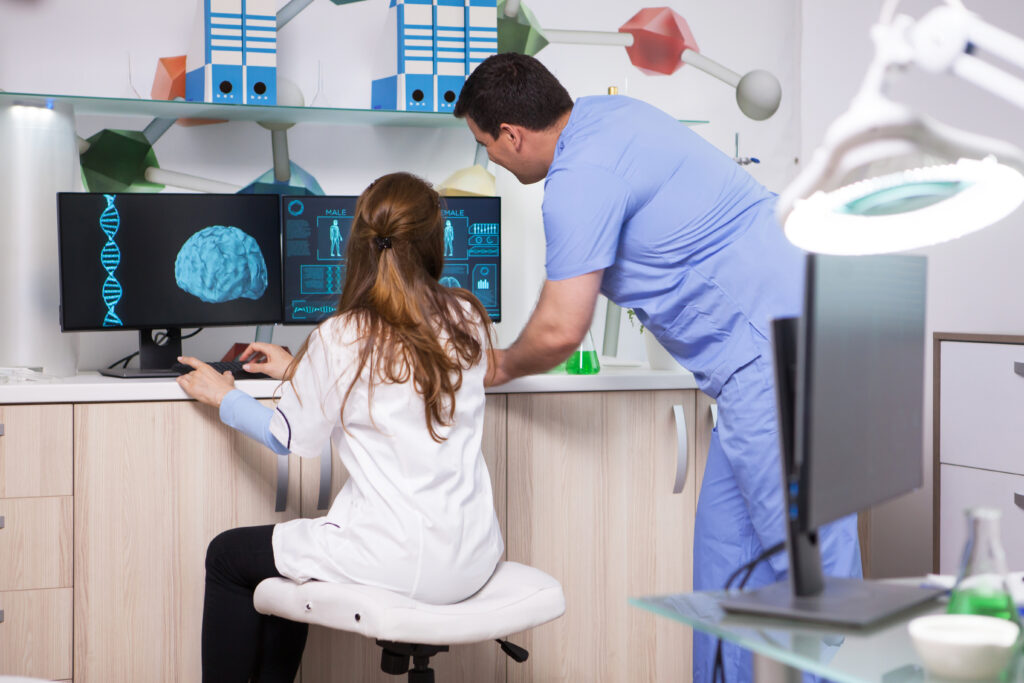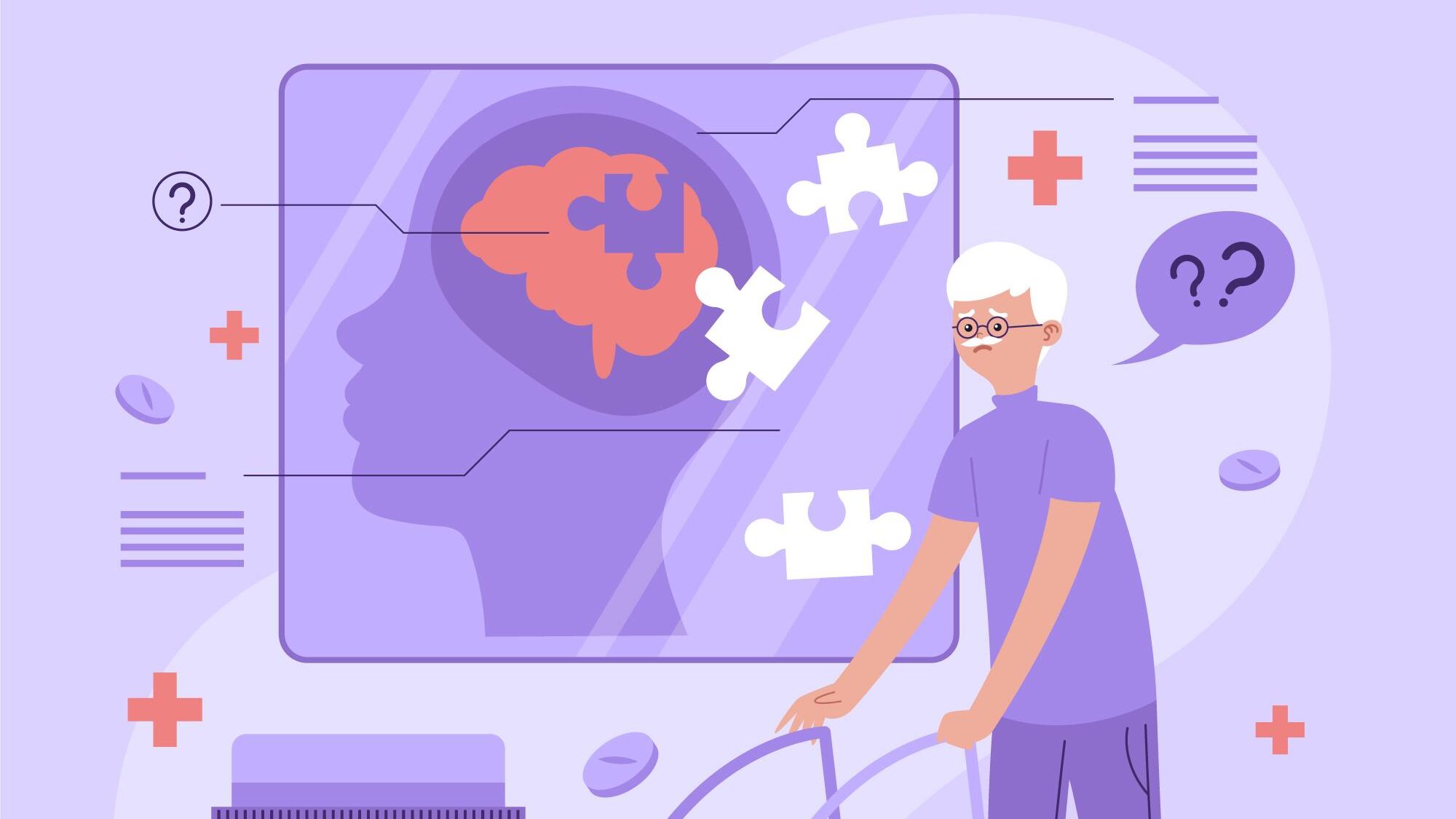
Breakthrough in Cognitive Research: Dual-Site Brain Stimulation Enhances Memory Performance
A recent study, published in eNEURO, has revealed a new method for significantly improving working memory. Researchers from the Higher School of Economics University in Moscow and Kingston University in London found that stimulating two specific areas of the brain at the same time led to better memory performance. Unlike previous methods, which focused on a single brain area, this study used dual-site high-definition transcranial direct current stimulation (HD-tDCS) on both the frontal and parietal regions. The result was an increase in memory accuracy and faster task completion.

Note: This article is intended for general information and educational purposes. It summarizes scientific research in accessible language for a broad audience and is not an official scientific press release.
Dual-Site Brain Stimulation: A New Approach
The study involved 48 participants who were divided into three groups. One group received dual-site stimulation over both the frontal (DLPFC) and parietal (PPC) regions. The second group only had stimulation over the frontal area, while the third group received a placebo, where no real stimulation occurred.
HD-tDCS is a non-invasive method that alters brain activity using small electrical currents. Participants received 15 minutes of stimulation before completing a complex task called the Operation Span (OSPAN). This task required them to solve mathematical equations while memorizing letters, testing both memory storage and processing.
The results showed that participants who received dual-site stimulation improved significantly. Their memory accuracy increased, and they completed tasks faster than the other groups.
Experts React: A Game Changer in Cognitive Science?
Lead researcher Dr. Nikita Otstavnov emphasized the significance of these results. He explained, “Stimulating both brain regions at the same time allows for cognitive improvements that we didn’t see in earlier studies focused on just one region.”
Co-author Dr. Matteo Feurra highlighted how this study could change brain therapy approaches. “The results open up new possibilities for treating conditions like ADHD and cognitive decline in older adults,” Feurra said. By using dual-site stimulation, there’s a potential to target multiple brain functions at once.
Building on Past Research
This new approach builds on earlier studies of brain stimulation. Most previous research looked at the effects of stimulating either the frontal or parietal regions alone. For instance, a 2018 study by Hill and colleagues used dual-site stimulation but didn’t find improvements in memory. They suggested that the tasks used in their study might not have been challenging enough to reveal any real benefits.
In this latest study, Otstavnov and his team used the OSPAN task, which is more complex and requires participants to handle both memory and problem-solving. This task better demonstrated the positive effects of dual-site stimulation on cognitive performance.
Key Findings of the Study
The study presented several important discoveries. Here are the key results:
- Improved Memory Accuracy: Participants who received dual-site stimulation targeting both the frontal and parietal areas demonstrated a significant improvement in memory accuracy compared to the single-site and placebo groups. This shows that stimulating both regions enhances working memory performance.
- Reduced Calculation Time: The dual-site group was significantly faster in completing the memory task (Operation Span Task) compared to both the single-site and placebo groups. This reduction in calculation time indicates that simultaneous stimulation improves cognitive processing speed.
- Faster Recall Response Times: Both dual-site and single-site stimulation groups showed a decrease in recall response times compared to the placebo group. This indicates that stimulation can enhance the speed of information retrieval from working memory, though dual-site stimulation had a more pronounced effect.
- No Impact on Mathematical Accuracy: Despite faster calculation times and improved recall, there was no significant difference in mathematical accuracy between any of the groups, including the dual-site and placebo groups. This suggests that the stimulation enhanced the speed of task completion without affecting accuracy in mathematical problem-solving.
- Differential Roles of Brain Areas: The study confirmed the distinct roles of the frontal and parietal brain regions in working memory tasks. The frontal region was more involved in the retrieval of information, while the parietal region played a critical role in the processing and retention of information, especially during complex tasks.
These findings highlight the effectiveness of dual-site HD-tDCS in enhancing working memory, offering promising implications for cognitive enhancement and potential applications in treating memory-related disorders
Implications for Health and Cognitive Performance
These findings have important implications for health, particularly in treating memory-related conditions. Disorders like ADHD, schizophrenia, and Alzheimer’s all involve working memory deficits. Improving memory function through non-invasive brain stimulation could provide better treatment options for patients with these conditions.

For healthy individuals, dual-site HD-tDCS could also help maintain cognitive function as they age. As memory tends to decline with age, this technique could help slow that process and keep cognitive functions sharp for longer.
In clinical settings, dual-site brain stimulation might become a valuable tool for patients recovering from brain injuries or strokes. Enhancing working memory could help these individuals regain important cognitive skills needed for daily life.
Looking Ahead: The Future of Brain Stimulation Research
While the results of this study are promising, more research is necessary to understand the full potential of dual-site HD-tDCS. Future studies should investigate how long the benefits of the stimulation last and whether repeated sessions could lead to further improvements.
Larger studies are also needed to confirm these findings across different groups of people. Researchers are especially interested in whether this technique could improve other cognitive functions like decision-making, attention, and problem-solving.
This research marks a significant step forward in the field of brain stimulation. By demonstrating that stimulating both the frontal and parietal regions can significantly boost working memory, the study opens up new avenues for treating memory-related conditions and enhancing brain function in general. Working memory, a type of short-term memory, is crucial for tasks like reading, learning, and reasoning, as it allows us to temporarily store and manipulate information. Strengthening this function through brain stimulation offers promising possibilities for improving cognitive performance.
The information in this article is provided for informational purposes only and is not medical advice. For medical advice, please consult your doctor.














